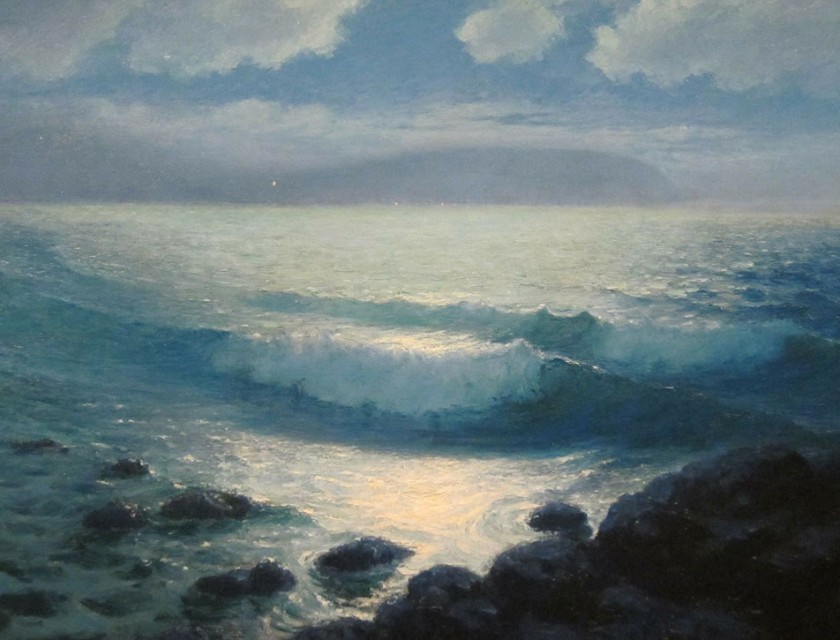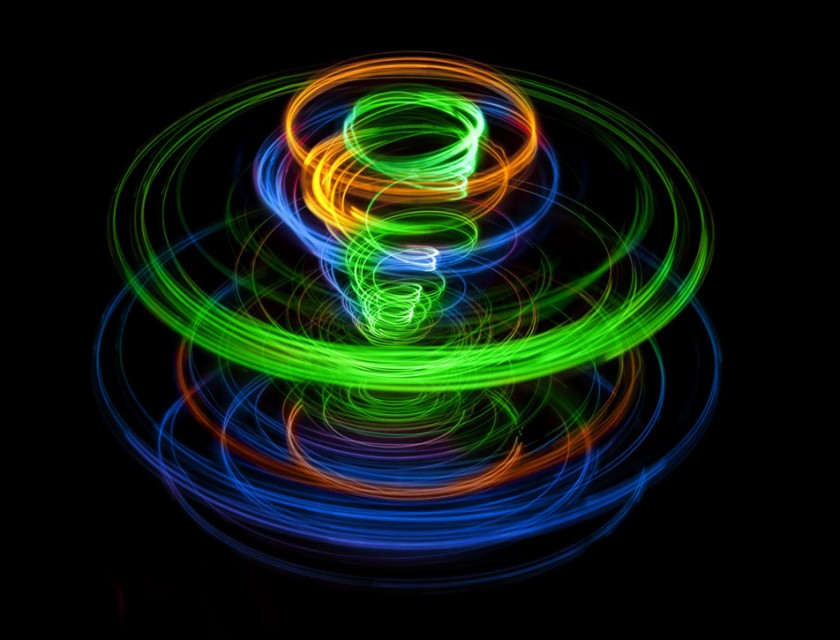Māyā (ILLUSION , DELUSION)
As I switched off the television in my study and rendered the popular K-serial back into the electromagnetic ether, I wondered to myself – was this what the Vedic rishis alluded to by the word māyā . Just as I was able to turn off the sound and light interplay with a little pressure on my remote, I thought to myself – is this what’s going to happen to my five senses some day – but then where is the remote and who has the finger on the button, my button? That this world is ephemeral I believe, but that it is all an illusion I do not accept – there must be more to this māyānvī universe, or should I say multiverse in Ken Wilber’s terminology. With such heavy thoughts I first illumined my desk and then turned to various scholars for help.
Māyā is derived from the root √mā in Sanskrit that literally means to measure, to form, to limit . According to the Hindu philosophy all that we observe through our senses falls into this realm of measurability and determination, giving rise to the multiplicity of creation. The oldest of the Vedas the Rig Veda gives Lord Indra the mantle of māyin , or one who brings about this māyā and a shlöka (6.47.18) affirms :-
rūpam rūpam pratirūpo babhūv tadasya rūpam prati chakshanāya
indro māyābhih pururūpa iyate yuktā hayasya harayh shatā dasah..
The various shapes and forms of māyā that are nurtured by our collective vision is Indra precipitating Himself in lower forms. This manifestation is likened to Indra as the charioteer, harnessing ‘a thousand horses’ referring to the multiplicity of the universal shaktī . Lord Indra, in Purānic myths, is the master of Devlok or the intermediate region of heavenly splendor. Here he regales other Gods or Devtas and there is many a saga of boons and battles, between them and the Demons. These stories are the back bone of mundane Hindu wisdom that for millennia have helped many a grandmother coax children to sleep and inculcate in all a step towards spiritual quest.
The Upanishads are scholarly and take a more logical view. The Brhad-āranyaka Upanishad (V.5.1) explains this manifestation as satyam , an eternal truth emanating from Brahman, the Unknown. Brahman is beyond conscious ken and can only be referenced by neti neti (not this, not this), that it is neither big nor small, can never be created or destroyed, omnipotent but yet not accessible to the senses and so on and so forth. Satyam consists of three syllables, sa , ti , yam , the first and the last being real and the second unreal, madhyato anrtam. The fleeting is enclosed on both sides by an eternity which is real…. Here sa is the third sibilant and stands for shaktī or emanating energy and yam means the end, it is also the name of a mythical Purānic God who appears at the time of death – scythe in hand. So māyā is ti, the incessant cosmic dance of matter, set between these outer limits. Brahman without losing its integrity is likened to the immense ocean and its calmness. The individual ātman arises as a wave from this sea, finds its height of glory during its ‘life’ and ends on a smooth beach or crashes on crags, as the case may be, depending on its collective karmas or samskāras .
As this ātman develops a self-consciousness it looks around and sees, in the words of S. Radhakrishnan – “The actual fabric of the world, with its loves and hates, with its wars and battles, with its jealousies and competitions as well as its unasked helpfulness, sustained intellectual effort, intense moral struggle seems to be no more than an unsubstantive dream, a phantasmagoria dancing on the fabric of pure being…” The author explains that this ‘fabric’ is like a ‘scrim’ (A thin canvas used on stage to both show the audience the back stage and at times to hide it, by using a clever display of light and colours). And this is also the cloak of Brahman, the Unknown, who has precipitated this worldly order-chaos dichotomy. “A dress serves two purposes – it hides and it displays”. This is the vāsyam referred to in the first line of the first shlöka of Īśavāsyopniśad :-
īśāvāsyam idam sarvam yat kim ca jagatyām jagat…
All this, whatsoever moves in this Universe, including the Universe itself moving, is indwelt or pervaded or enveloped or clothed by the Lord…
In the words of Ādi Śankarachārya man’s deceitful senses are part of this duality and are continuously trapped within its illusionary ordeal. However, S. Radhakrishnan qualifies this further and says that māyā is not the illusionary world around us as is commonly interpreted. It is rather an opportunity for honing our senses to a higher order and merging the ātman back into the Brahman. The Maitri Upanishad says that Brahman is like a spark which when revolved becomes a fiery circle. Thus the incessant movement of matter prevents us from ‘seeing’ this spark as an individual bindu or spot of light. It is the silent mind that escapes this entrapment and overcomes the pain – pleasure circumambulation.
What emerges through this veil of words is that māyā is like the scrim of Radhakrishnan. To pierce this screen we should illumine the ‘other’ side with venturesome knowledge. We can overcome an illusion by outward knowledge e.g. the silvery shimmer of a mirage or the straight stick appearing bent in water is determined both by experience and science. Delusion, on the other hand is when we fail to perceive the Divine essence of nature and regard it as a mere mechanical determination unrelated to Brahman. The implication is that the problem of māyā is inherent in the attitude of those who perceive, not in that which is perceived. So long as the individual thinks himself to be a separate atom in this immense universe, so long as he has the idea that he is the chief actor in the stage, he is in the world of māyā,…. When he recognizes the essence of the finite to be in the Infinite, when he realizes that he is but an instrument of a nobler purpose, he will get out of this world of māyā. To transcend this statistical limit we require an inner search, a repetitive build-up of spiritual energies, a regimen of reinforcing natural harmonies.
To accept māyā as an illusion or just a dream can lead us to misplaced asceticism, an indifference to the world. On the other hand, we should understand how the five senses and their interplay limits our spiritual consciousness. We are like the children of today with myriad toys ; but then, it is our conscious choice whether we while away the precious moments or use our ‘play’ as metaphors to build our future careers.
I went back to the remote and switched to another channel – there was a bright spot on the screen with a cloudy trail. As the point broke first into two and then many, the full implication of the scene dawned on me – the shuttle had disordered ; many unfulfilled dreams evaporated before my eyes on the misty tube.
I, myself, switched the TV off at the mains and sat down in silent meditation…


